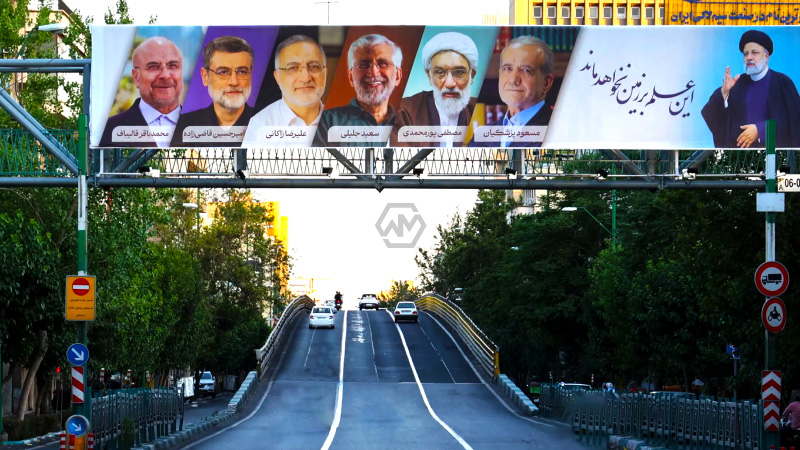- Two candidates withdraw, narrowing the field ahead of the election.
- A run-off election seems inevitable unless further withdrawals occur.
- Voter apathy remains a significant issue, with low turnout expected.
As Iran’s presidential election approaches, the political landscape is becoming increasingly suspenseful following the withdrawals of Tehran Mayor Alireza Zakani and government official Amir-Hossein Ghazizadeh Hashemi.
The election, moved up due to the tragic death of President Ebrahim Raisi, has highlighted a deep divide between hardliners and moderates. Despite their differences, all candidates have pledged loyalty to Supreme Leader Ayatollah Ali Khamenei and the IRGC, reflecting the overarching influence of these institutions on Iranian politics.
Iranian Presidential Election: A Pivotal Moment
The upcoming Iranian presidential election, accelerated due to the unexpected death of President Ebrahim Raisi, has seen a significant narrowing of candidates after the recent withdrawals of Alireza Zakani and Amir-Hossein Ghazizadeh Hashemi. This has left a field consisting of prominent figures such as Mohammad Bagher Ghalibaf, Saeed Jalili, Masoud Pezeshkian, and Mostafa Pourmohammadi. Each candidate brings distinct backgrounds and perspectives to the table, yet they all navigate a political environment marked by voter indifference and anticipated low turnout.
Ghalibaf, the conservative incumbent parliament speaker, and Jalili, a hardline member of the Supreme National Security Council, represent the more stringent side of Iranian politics. Both have previously sought the presidency and are now seen as frontrunners. Pezeshkian, the sole moderate candidate, has garnered support from centrist and reformist figures, positioning himself as a potential bridge between conservative and reformist ideologies. Pourmohammadi, although conservative, has struggled to align fully with other hardliners due to some of his views.
Iran’s elections have historically oscillated between reformist and establishment candidates, and this year is no exception. Despite this dynamic, all remaining candidates have pledged allegiance to Supreme Leader Ayatollah Ali Khamenei and have expressed their commitment to the IRGC. This uniformity underscores the continuing dominance of these institutions over Iran’s political landscape, irrespective of the candidate’s individual platforms or public persona.
The election also casts a spotlight on Iran‘s socio-political challenges, including economic hardships, international sanctions, and internal dissent. Candidates have made broad promises to address these issues, but concrete policy details remain sparse. The electorate’s apparent disinterest and predicted low voter turnout may signal a growing disillusionment with the political process and its ability to bring about substantive change.
As the Iranian presidential election nears, the country’s future hangs in the balance. The outcome will determine not only the immediate political direction of Iran but also its broader approach to domestic and international challenges.
“Widespread voter apathy has dogged Iranian elections for several years, with roughly half the eligible voting population projected not to vote.”



